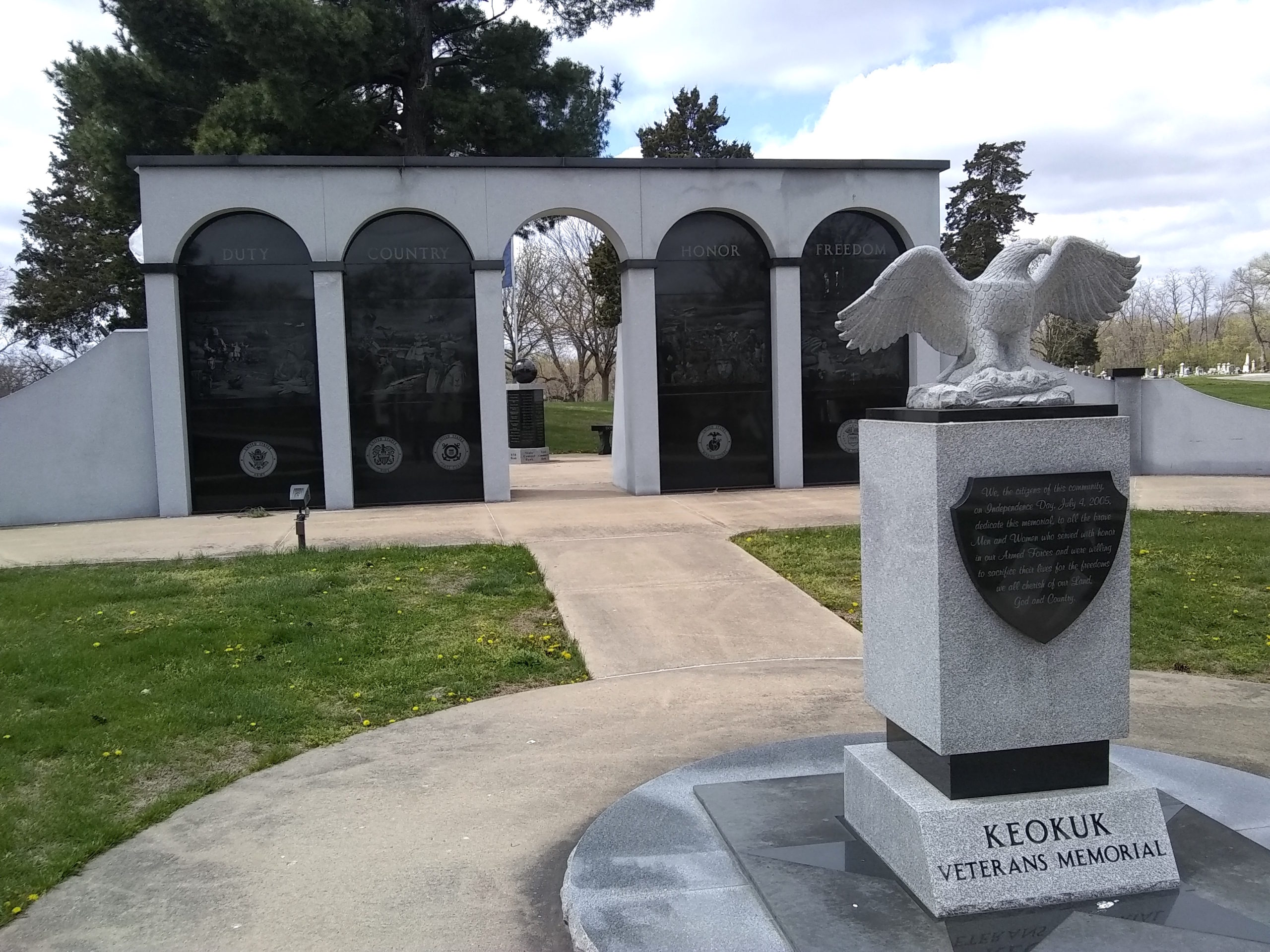
The east entrance to Keokuk National Cemetery, established in 1862. Photo by Don Doxsie
By Don Doxsie
In August of 1870, famed landscape architect Frederick Law Olmsted penned a letter to Gen. Montgomery Meigs, the quartermaster of the U.S. Army, voicing his opinion on what the country’s growing array of national cemeteries should look like.
Olmsted, who had designed Central Park in New York City, said the cemeteries needed to be “studiously simple.”
“The main object,’’ he said, “should be to establish permanent dignity and tranquility … a sacred grove, sacredness being expressed in the enclosing wall and in the perfect tranquility of the trees within.”
You can see Olmsted’s concept expressed clearly in a distant corner of Iowa, amid the rolling hills on the southwest edge of the city of Keokuk. Keokuk National Cemetery is, as Olmsted prescribed, studiously simple and feels much more like a park than a graveyard.
The grounds are wooded and green. All the headstones are the same size and shape, whether they mark the final resting place of an esteemed general or a nondescript private.
The west entrance to the cemetery is plain but stately. The east entrance has the words “duty, country, honor and freedom’’ displayed prominently. The landscape beyond is pebbled with slabs of white marble arranged neatly in precise rows on the sloping ground.
There now are 155 national cemeteries in the United States, governed by three different federal agencies, and Keokuk National Cemetery was one of the first.
It remains the only national cemetery in Iowa. There is a Soldier Lot devoted to military burials at Oakdale Cemetery in Davenport, but Keokuk is the only cemetery devoted exclusively to those who served their country with honor.
As with several of the country’s national cemeteries, it has its roots in the Civil War.
Because of its location at the confluence of the Mississippi and Des Moines rivers, Keokuk quickly evolved into a hotbed of activity during the war.
Soldiers in the First Iowa Volunteer Infantry began training there at Camp Ellsworth as early as May 1861, with the war barely a month old, and three other camps — Camp Rankin, Camp Halleck and Camp Lincoln — were established in the area over the ensuing year.
By the time the war ended in 1865, about 80,000 Iowans had used Keokuk as their launching place on their way to the fighting.
TO READ THE ENTIRE STORY AND OTHER FASCINATING STORIES ABOUT IOWA HISTORY, subscribe to Iowa History Journal.
